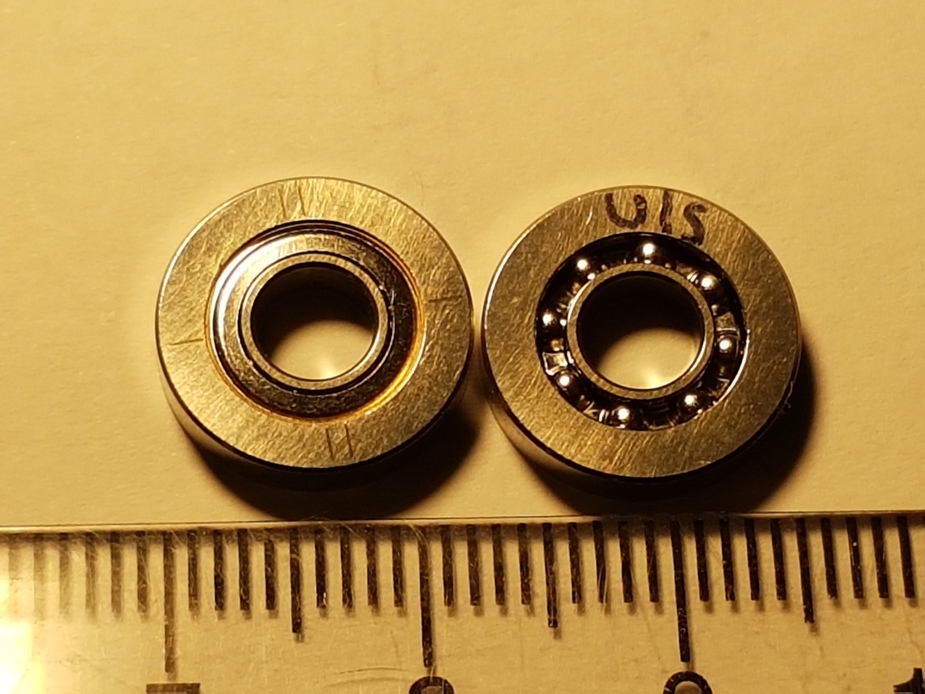Of course the bearings will warm up, simply by friction.
Peter wrote:
volving a backup battery for the instrument
The backup battery for the Garmin G5 is only a couple of hundred quid.
Bathman wrote:
Unfortunately the brand new 1200 quid sigmatec AH has just failed after 14 months and about 600 hours.
I have to imagine there is some other factor causing the failure. It’s unusual for a mechanical gyro to fail so fast (the mechanical AI and DG that I have in my aircraft date from around World War II, and still work very well… perhaps you ought to find one of those old huge black Sperry attitude indicators :-)). Excessive vacuum? Intake filter missing/ineffective?
I wonder if perhaps specific aircraft types have specific and less effective vacuum gyro inlet air filters. There are loads of different filters on the market…
Also it would be really handy to establish the source of the bearings used in some of these gyros. Obviously they are not made by Honeywell  I had a few in a box (from a repaired KI256) but can’t find them. With this coming in too, things aren’t going to get easier and most of these gyro repairs are going to move off the books, so directly sourced bearings will be fine.
I had a few in a box (from a repaired KI256) but can’t find them. With this coming in too, things aren’t going to get easier and most of these gyro repairs are going to move off the books, so directly sourced bearings will be fine.
There have been cases (ask me how i know) where a vaccuum driven gyro failed a short time after a vaccuum pump disintegrated … I could never prove that smal particles of carbin made it INTO the instrument (did nt have the tools to take it apart) but when we checked the hoses and the filter there were even large leftovers of the vanes inside … The company that had changed the pump did not clean the system, I found out later.
This is why one should have the “apparently useless” filter between the pump and the vac system which I mentioned in post #2.

If you get bits of the pump into the vacuum system, it’s too late. The instruments are going to be full of the stuff.
On my Bonanza, the air goes from the ‘vacuum pump’ to the instrument via an air filter. The reasoning was that in a classical vacuum system where the air goes from the cabin to the instrument to the vacuum pump, the cabin air might be contaminated with cigarette smoke, reducing life of the bearings inside the instruments. Since the pump vanes are carbon and they wear out, the filter is the only barrier keeping carbon dust out of the instrument in a pressure system.
Can anyone identify these bearings? They are out of a KI256 and are the most often replaced part

This box may or may not be related to the above… a quick google on the P/N suggests it probably is the bearing, but who makes it?

Peter – I think you may have quite a tough detective job on your hands. There is an alternative part number: SSRI-6632ZA0205MCRA7P24LB15P
From this, it’s not hard to figure out the fundamentals of the bearing: it’s a 6632Z – or in other words an inch series bearing 3/8"OD, 3/16"ID, 1/8" thick, with a shield on one side only. You can buy bearings like this for less than a fiver.
There is almost certainly much more to it than this, and this is probably coded in the rest of the part number. I have no idea how to decode it nor do I know from which manufacturer it comes.
The correct bearing is likely to be rated for high speed, also likely to be close tolerance. In addition, it is likely to be high precision. Radial marks like the ones you see on the outer race are sometimes found on high precision bearings and are there for a purpose – e.g. to show points of maximum or minimum run out. These marks allow you to get a bit more precision by aligning a pair of bearings accordingly.
Good luck!
Thanks Alan. Well found! They are probably made in the USA, with a possibility of being Chinese. There must be a hundred bearing manufacturers in the USA. I wonder if @Silvaire knows?
I will measure them up precisely when I get home. They are bigger than 3/8 OD. They are probably 1/2" OD.
In the last KI256 the repairer reported a “worn shaft” which I don’t quite get since surely the only wear should be in the bearings?